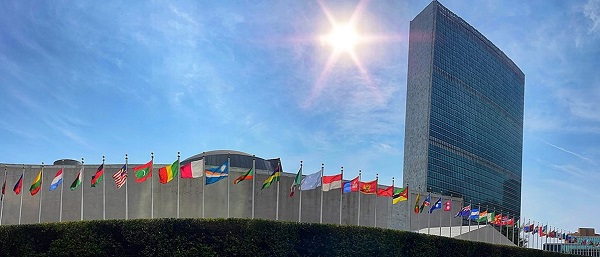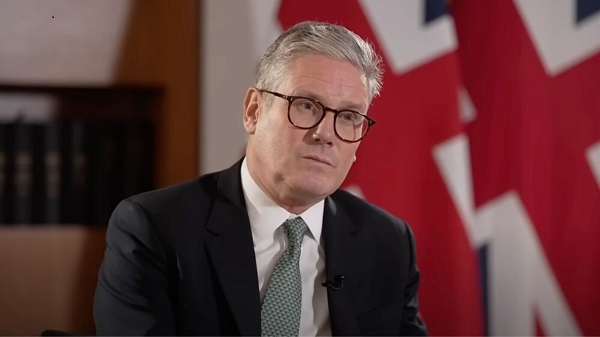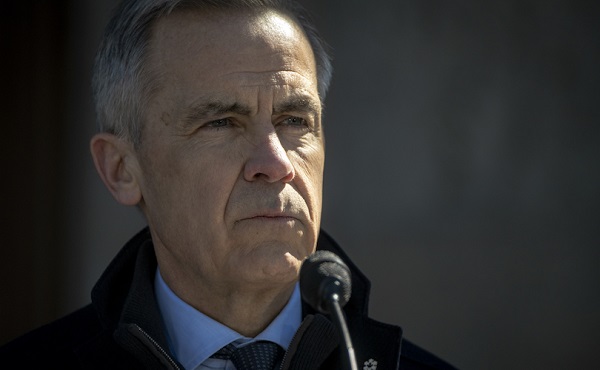Alberta
A Provincial Police That Serves Alberta

 Haultain Research
Haultain Research  Marco Navarro-Génie
Marco Navarro-Génie
The story of an RCMP sergeant decrying traditional values as a gateway for extremism should be more than troubling. It should be fuel for every Albertan committed to establishing a provincial police force that reflects who we are, not what Ottawa wishes us to become.
Alberta has lately endured serious RCMP overreach. We remember the door-kicking in Fort McMurray, and the same abusive aggression repeated during the 2013 floods in High River. And few will forget the politically fabricated claims made against the Coutts Four. These weren’t isolated incidents. They are expressions of an institutional culture unmoored from Alberta’s interests, unaccountable to its people, and ultimately indifferent to the liberties Albertans value.
The RCMP was not always this way. It was once a respected force rooted in Western traditions, created to keep peace and order on a rugged frontier—an institution with a sense of duty to the West it served. But that era has long passed. The RCMP today is a different creature—centralized, politicized, and openly hostile to the values it was once meant to protect.
This is why the push for an Alberta provincial police force must not be dismissed as symbolism or empty political gesture.
Let us be clear: Alberta doesn’t need anyone’s permission to establish its police force. Section 92 of the Constitution Act, 1867 grants Alberta the authority to create its police force. Quebec and Ontario have done so. Alberta is equally entitled, despite the centralizing delusions that drift through Ottawa and a few bon pensants among the New Democratic opposition.
Still, entitlement alone is not enough. Execution matters.
There is a quiet triumphalism in some circles—a belief that simply calling a force “Alberta Provincial Police” will make it better. But geography never guarantees virtue. Unless Albertans are intentional, Alberta risks reproducing the same policing culture that has failed us, only with new decals and a provincial seal.
The story of Jeremia and Dominic Leussink five years ago illustrates the danger. The two brothers, farmers near Didsbury, were trying to do their work. After a 16-hour shift, Jeremia, then 18, was driving a tractor down Highway 2A. He entered a police checkstop through a ditch, which is standard practice on rural roads. Alberta Sheriffs didn’t use discretion. They used force. Jeremia was dragged from the tractor, slammed into the gravel, and punched in the neck and face. Dominic, who arrived soon after, was detained when he attempted to prevent damage to the machinery. Charges were laid and then quietly dropped, but not before the boys endured physical harm and a humiliating brush with the law.
This wasn’t the RCMP. This was a provincial outfit. And it reminds us that the problem isn’t just federal control—the culture and traditions of a police force matter.
This brings us to a deeper question: What kind of police culture should Alberta build?
Alberta is not a generic Canadian province. As its motto declares, we are strong and free. Our strength lies in our culture. We prize private enterprise and property not as a luxury but as the bedrock of freedom. We value liberty—not only the freedom to speak, worship, associate, and dissent, but the freedom from the state when it seeks to impose itself where it doesn’t belong. These convictions are not ornamental. They are essential to the Alberta way of life.
The Canadian Charter of Rights and Freedoms, notably, does not even mention property rights. That tells you everything about the central Canadian view of liberty. And it explains why so many of our freedoms—property, expression, conscience—are eroding under the bureaucratic thumb of progressive ideology that dominates Laurentia.
This isn’t theoretical anymore. It’s operational.
The remarks by RCMP Staff Sergeant Camille Habel about “traditional values” being a path to extremism are not fringe views. They reflect a new cultural orthodoxy now embedded in federal institutions. And they make it more urgent that Alberta create its force, one grounded in law and in culture. That means training Alberta’s officers in accordance with Alberta’s distinct values.
To get there, we must be deliberate.
We should begin by identifying the core virtues that must define an Alberta police force. First, it must be culturally rooted. Officers should not merely patrol Alberta, but belong to it, understanding the values, customs, and expectations of the people they serve. Second, it must train law enforcement personnel to make independent judgments: those capable of thinking clearly under pressure, guided not by rigid directives but by the principles of justice. Third, it must embody moral clarity—a refusal to chase ideological bogeymen while real crimes fester. Fourth, it must be directly accountable, not to Ottawa ideals, not to abstract policy frameworks, but to Alberta communities and Alberta law. And finally, and most critically, it must protect Alberta’s distinct culture, which includes our deep concern for individual freedom, strong property rights, and a form of government that respects and serves its citizens as individuals.
But virtues alone won’t build a force. Institutions do that.
Founding a new institution requires the founding of new training ways. An Alberta Provincial Police would need a new, purpose-built academy curriculum, distinct in philosophy, to ensure a shift in policing culture, not just in uniforms and reporting lines. This new academy must include training in Alberta history, culture (and place Alberta law in its context), not as window dressing, but as the foundational context for service. The Ministry of Public Safety must understand that setting the DNA of a new force is not optional—it is paramount. No amount of administrative rebranding will protect Albertans if the force is trained in the same ideological water that floods federal institutions.
These are not theoretical ideals. They are the qualities that allow a free people to remain free. And if Alberta is to continue building something worthy, we might look—not uncritically, but carefully—at the best of what police forces beyond Ottawa’s offer.
Take the Texas Rangers, for example. While their early record contains severe stains, the Rangers in their more refined tradition offer a model of law enforcement that is local, deeply serious about justice, and wary of distant interference. They have long seen themselves not as agents of Washington, but as guardians of the Texan way of life. That distinction matters. It makes them accountable to the people they served, rather than to federal fashions or shifting ideological norms in Washington.
The old Ranger saying “One riot, one Ranger” was not a boast but an expectation. It meant that each officer was expected to act with competence, courage, and restraint. No sprawling command structure. No ten layers of liability-avoidance. Just principled responsibility, exercised by someone embedded in the land she served.
And that made all the difference.
What made the Rangers distinct was not their tactics, but their cultural placement. They thought like Texans because they were Texans. They acted with authority because their authority came from below, not above. They didn’t simply enforce laws; they protected a way of life.
That is the kind of institutional culture Alberta must create, one that sees policing as a defence of community, liberty, and order, not as an arm of political engineering designed elsewhere, even in Edmonton. Not a bureaucracy in new colours, but a corps of officers sworn to Alberta first.
If done well, an Alberta Provincial Police will be a shield against federal overreach, Laurentian cultural hostility, and the creeping conformity of federal institutions. If done poorly, it will be a clone of the RCMP with all its woke condescension toward Western rurals and independent thinkers.
Alberta cannot afford to get this wrong.
Subscribe to Haultain Research
For the full experience, and to help us bring you more quality research and commentary, please upgrade your subscription.
Alberta
How Alberta is moving to speed up oil sands reclamation with mine water treatment
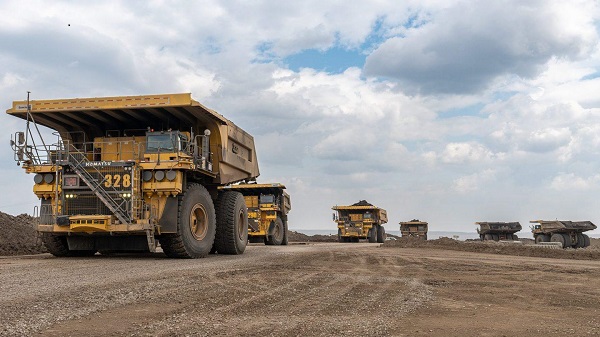
From the Canadian Energy Centre
New standards to build on rules already in place for other mining sectors
In what the former Chief of the Fort McKay First Nation calls “a critical step in the right direction,” the Alberta government is moving to accelerate reclamation of more than 1.3 trillion litres of water stored in oil sands tailings ponds.
On Sept. 5, the province announced it will expedite setting standards that allow for “mine water” to be treated and released into the environment, building on the rules that are already in place for other mining operations across Canada.
“We cannot ignore this challenge, we need to keep working together to find practical and effective solutions that protect Indigenous rights, people and the environment,” said Chief Jim Boucher, a member of Alberta’s Oil Sands Mine Water Steering Committee.
That committee is behind a suite of nine recommendations that Alberta is putting into action to improve mine water management and tailings pond reclamation.
The Mining Association of Canada (MAC) says decades of research give the industry confidence that mine water can be safely treated and released once regulations are in place.
But that will take the federal government moving faster too.
Both the federal and provincial governments play a role in potential regulations for the treatment and release of oil sands mine water.
“Alberta is proposing science-based parameters to ensure the safe return of treated water used in oil sands mining, just as other provincial governments do for their respective mining sectors,” MAC CEO Pierre Gratton said in a statement.
“We are hopeful that this will accelerate the development of federal regulations – which we requested almost 15 years ago – to be similarly advanced.”
Gratton said setting standards for safe mine water release could unlock “significant investments” in oil sands reclamation and water treatment.
What are tailings ponds?
Tailings are a byproduct of mining operations around the world.
Oil sands tailings ponds are engineered basins holding a mix of mine water, sand, silt, clay and residual bitumen generated during the extraction process. There are eight operating oil sands mines with tailings ponds in northern Alberta.
Recycling water held in these basins helps operators reduce the amount of fresh water withdrawn from the Athabasca River.
In 2023, 79 per cent of the water used for oil sands mining was recycled, according to the Alberta Energy Regulator.
What is oil sands mine water?
Oil sands mine water is water that comes into contact with the various stages of oil sands mining operations, including bitumen extraction and processing.
Tailings ponds in the oil sands also hold water from significant amounts of rain and snow collected in the decades since the first mines began operating.
While the oil sands mining sector has reduced the amount of fresh water it uses per barrel of oil produced by nearly one-third since 2013, the total volume of mine water in tailings storage has grown as production has increased.
What’s in oil sands mine water?
The constituents of oil sands mine water requiring treatment for safe release are both typical of water in other industrial processes and unique to the oil sands sector.
MAC says common materials are suspended solids like sand, silt and clay, as well as a range of metals. These can be treated by a wide range of proven technologies already in use in Canada and globally.
Unique to oil sands mine water are organic compounds such as naphthenic acids. According to MAC, operators have demonstrated and continue to invest in processes to treat these to levels safe for environmental release.
How does mine water impact reclamation?
At the end of an oil sands mine’s life, operators must remove all infrastructure and restore the land to features of a self-sustaining boreal forest similar to what was there before.
Addressing the challenge of tailings ponds and the mine water stored in them is critical to the overall success of oil sands mining reclamation.
Why is mine water release important?
MAC says the only way to remove mine water in tailings ponds is to treat it for safe release to the environment.
Strict regulations allow for this process across Canadian copper, nickel, gold, iron ore, and diamond mining operations. But it is prohibited in the oil sands.
The safe release of treated oil sands mine water into the environment can reduce the need to store it, minimize further land disturbance and help reclamation happen faster.
MAC says operators have shown they can treat mine water to safe release levels, using processes that include innovative technologies developed through Canada’s Oil Sands Innovation Alliance.
What is Alberta doing?
Alberta has accepted the Oil Sands Mine Water Steering Committee’s nine recommendations aimed at speeding up solutions for safe mine water release.
The province says the recommendations, developed with input from industry, technology providers, Indigenous communities and scientists, will now be evaluated to determine how they can be put into practice.
Alberta
Premier Smith directs ministers to grow economy and create jobs
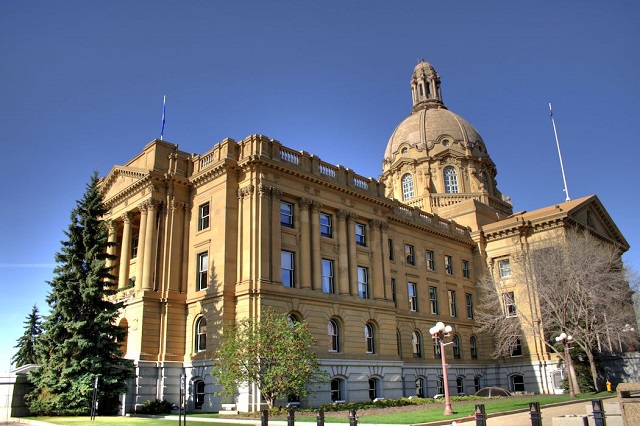
Premier Smith has issued new mandate letters to several ministers. Minister of Jobs, Economy, Trade and Immigration Joseph Schow will push for Alberta to set its own immigration levels and expand youth job programs. Minister of Forestry and Parks Todd Loewen will strengthen wildfire protections and open more recreation opportunities. Minister of Tourism and Sport Andrew Boitchenko will expand year-round tourism and implement the Fairness and Safety in Sport Act to ensure women and girls have the opportunity to compete in biological female-only divisions. Minister of Arts, Culture and Status of Women Tanya Fir will expand Alberta Day, showcase the provincial flag more prominently, and improve supports for survivors of domestic violence.
Alberta’s Minister of Jobs, Economy, Trade and Immigration Joseph Schow, Minister of Forestry and Parks Todd Loewen, Minister of Tourism and Sport Andrew Boitchenko and Minister of Arts, Culture and Status of Women Tanya Fir have been tasked with promoting Alberta’s industries, driving investment, creating jobs and increasing prosperity for people who live in Alberta.
The new mandate letters are focused on delivering the programs and supports that matter to Albertans, Alberta companies, workers and the economy, while maintaining Alberta as the best place to live, work and raise a family.
Through the commitments outlined in each mandate letter, Alberta’s ministers will deliver results, strengthen communities and build a future rooted in prosperity, opportunity and responsible governance.
“A resilient and diversified economy is one of our top priorities and what Albertans expect from their government. We are creating the conditions for workers and industries in Alberta to keep growing – by supporting investments where they are needed and reducing barriers that stifle innovation and expansion.”
Jobs, Economy, Trade and Immigration
The Premier tasks Minister Joseph Schow with:
- Using every legal and policy tool to gain greater provincial authority over immigration, setting sustainable levels that prioritize economic migrants, and ensuring young Albertans have access to jobs. Expanding programs to reduce youth unemployment, developing talent pipelines and helping newcomers integrate successfully.
- Attracting major domestic and international investment by coordinating with partners, reviewing and improving incentive programs, increasing the Investment and Growth Fund and aligning investment attraction agencies with Alberta’s long-term economic goals.
- Defending Alberta’s interests in federal trade negotiations, implementing and managing trade agreements and supporting Alberta businesses to expand into new global markets through trade missions and services.
- Collaborating with ministries and partners to expand airport capacity and connectivity, supporting value-added forestry initiatives, growing Alberta’s cultural industries and securing public and private investment in defense-related and other strategic infrastructure projects.
“Alberta continues to stand out as the best place to do business. Our government’s work is leading to a stronger economy, more jobs and more opportunity for those who call Alberta home. I am honoured to accept this mandate given to me by Premier Smith to continue this growth for Alberta, keeping our province strong and free.”
Forestry and Parks
The Premier tasks Minister Todd Loewen with:
- Securing a federal partnership for wildfire mitigation on federal lands, especially in national parks, and advancing proactive fire management through strategic harvesting, fuel reduction, expanded FireSmart programs, new technology and modern firefighting equipment.
- Finalizing and implementing the new strategy to expand public access to natural spaces responsibly, while continuing to add new campsites, trails and recreation opportunities, and upgrading infrastructure in high-traffic areas like Kananaskis, Canmore and Crowsnest Pass.
- Remaining committed to a common-sense approach to maintain healthy wildlife populations and guide ministry practices related to fish and game management.
- Proposing a value-added tax incentive for forestry products and enabling more public land use opportunities through private and community partnerships.
“The beautiful outdoors of our province feels like home for many Albertans. Our government is continuing its work to make sure that the land we have all grown up loving will stay strong for Albertans today and for future generations”
Tourism and Sport
The Premier tasks Minister Andrew Boitchenko with:
- Maintaining progress on expanding opportunities for sustainable year-round tourism in the Alberta Rockies with all-season resorts.
- Ensuring the full implementation of the Fairness and Safety in Sport Act, using every legal and constitutional tool available to defend Alberta athletes and guarantee a level playing field.
- Respecting taxpayer dollars by creating a new provincial bidding policy to oversee future bids to host international and national sport events and working with Treasury Board and Finance to ensure visitors contribute fairly to taxes and fees.
- Continuing to work with Travel Alberta to unleash Alberta’s potential and reach the ambitious goal of $25 billion in visitor spending.
“Premier Danielle Smith has made my mandate clear; grow Alberta’s visitor economy and ensure our province continues to be the best place to live, work, visit and play. We have already had great success, and I am excited to keep that ball rolling as we work to strengthen Alberta’s tourism and sport sectors. Albertans elected us to get the job done and that’s exactly what I intend to do.”
Arts, Culture and Status of Women
The Premier tasks Minister Tanya Fir with:
- Continuing to work with the Minister of Jobs, Economy, Trade and Immigration to grow Alberta’s cultural industries including music, television, film and other performing arts.
- Maintaining progress on promoting and celebrating Alberta’s unique cultural identity and heritage, including identifying opportunities to more prominently display our provincial flag and motto across the province while significantly growing the size and scope of Alberta Day celebrations.
- Remaining committed to collaborating with First Nations throughout the province that wish to repatriate items identified as belonging to their nations, including the implementation of the new repatriation framework.
- In cooperation with the Minister of Children and Family Services, pushing forward on developing and implementing supports for victims of domestic violence.
“Our government has a clear vision for Alberta’s arts, culture and heritage sectors to ensure they remain central to our economy, identity and communities. Through this mandate, I will continue leading initiatives that celebrate who we are, create more opportunities in cultural industries, collaborate with First Nations partners and support survivors of gender-based violence.”
-
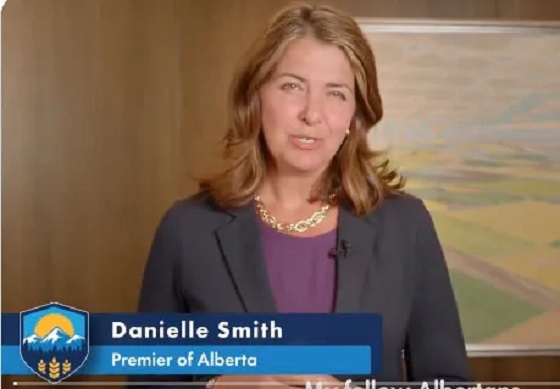
 Alberta1 day ago
Alberta1 day agoNo Permission Required: Alberta Will Protect Its Daughters
-

 Alberta19 hours ago
Alberta19 hours agoHow Alberta is moving to speed up oil sands reclamation with mine water treatment
-
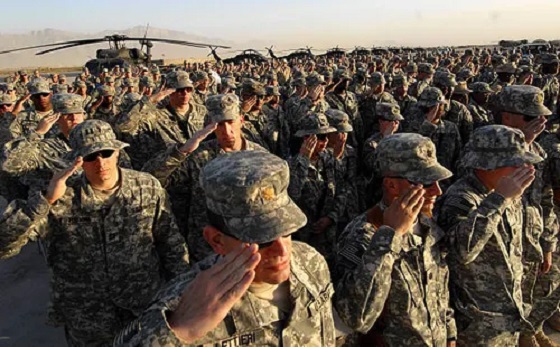
 International2 days ago
International2 days agoTrump vows to reclaim Afghanistan air base after Biden’s botched exit
-

 Business1 day ago
Business1 day agoEnergy leaders send this letter urging Prime Minister Mark Carney to unlock Canada’s resources
-

 COVID-191 day ago
COVID-191 day agoQuebec ends free distribution of COVID shots
-
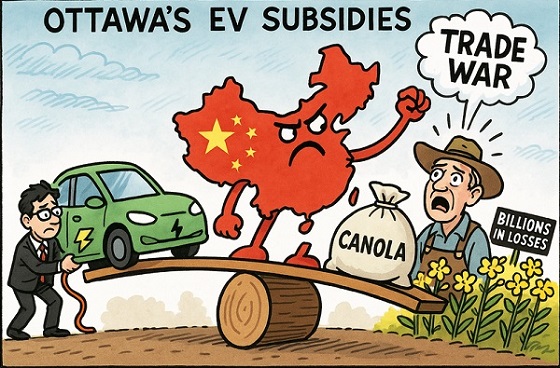
 Agriculture19 hours ago
Agriculture19 hours agoOttawa’s EV Gamble Just Cost Canola Farmers Billions
-

 Business12 hours ago
Business12 hours agoHow the feds blew your money this week
-

 Opinion1 day ago
Opinion1 day agoBill Maher Notices a Major Flaw in Jimmy Kimmel’s Claim About Charlie Kirk’s Shooter

